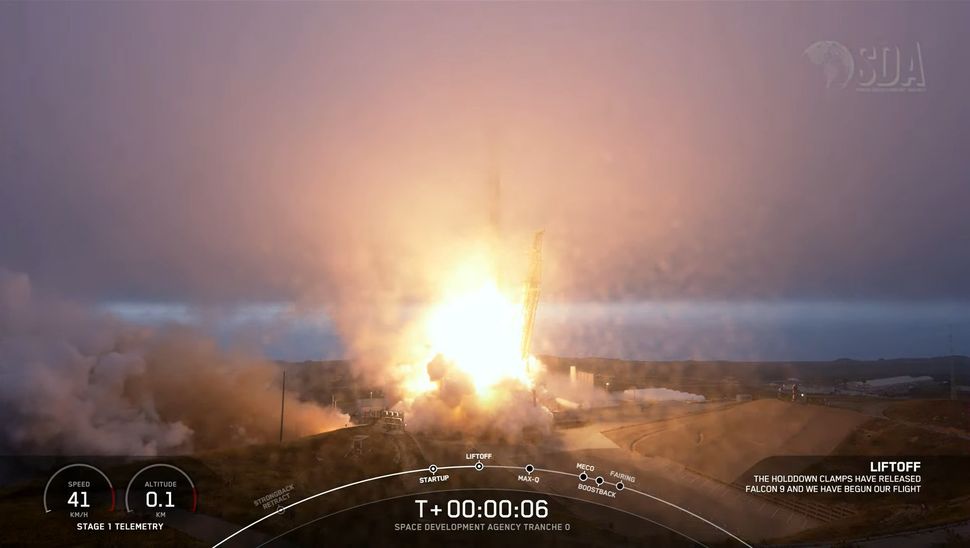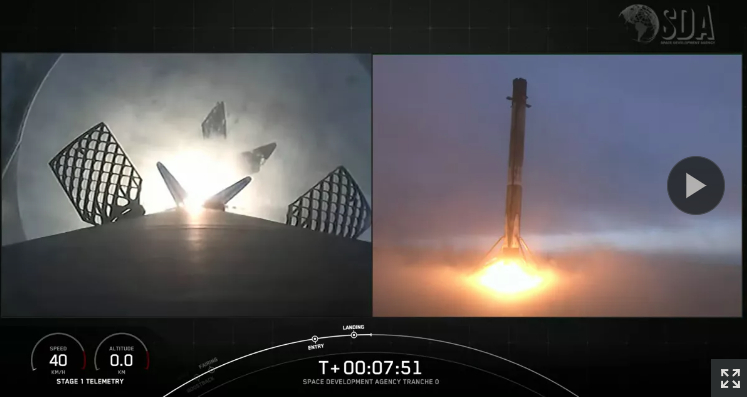The Tranche 0 satellites are part of a new fleet of military satellites for the U.S. Space Force.
SpaceX launched a set of advanced new satellites for the U.S. Space Force Sunday (April 2) after days of delay caused by a last-second abort last week.
A Falcon 9 rocket topped with 10 spacecraft for the Space Force's Space Development Agency (SDA) lifted off from California's Vandenberg Space Force Base Sunday at 10:29 a.m. EDT (1429 GMT; 7:29 a.m. local California time). The rocket's first stage booster then returned to Earth safely, touching down at Vandenberg's Landing Zone 4 just under eight minutes after liftoff.
"This was the second launch and landing for this specific booster and our 183rd overall successful recovery of an orbital class rocket," SpaceX production engineer Jessie Anderson said during live commentary. The rocket previously helped launch a batch of SpaceX's Starlink internet satellites to orbit, according to a SpaceX mission description(opens in new tab).
SpaceX did not show live views of the launch or payload fairing separation from the Falcon 9's second stage at the request of the Space Development Agency, with the company ending its livestream shortly after its booster landing.

SpaceX's mission description did not detail when the Tranche 0 spacecraft are scheduled to be deployed. That's not terribly surprising; details about national security missions such as this one are often hard to come by.
We do know a bit about the Tranche 0 spacecraft, however. For example, they are the first members of the Proliferated Warfighter Space Architecture (PWSA), a constellation the SDA will assemble in low Earth orbit.
"Under the plan, the Space Force will have hundreds of small satellites, with new ones launched every few years to increase resilience and capabilities in orbit," Air and Space Forces Magazine wrote about the PWSA(opens in new tab).

Another Tranche 0 satellite batch is expected to launch in June, according to Air and Space Forces Magazine.
"The entire tranche consists of 28 satellites — 20 for data transport and eight for missile tracking," the outlet wrote.
- aum and Karlston
-

 2
2




Recommended Comments
There are no comments to display.
Join the conversation
You can post now and register later. If you have an account, sign in now to post with your account.
Note: Your post will require moderator approval before it will be visible.